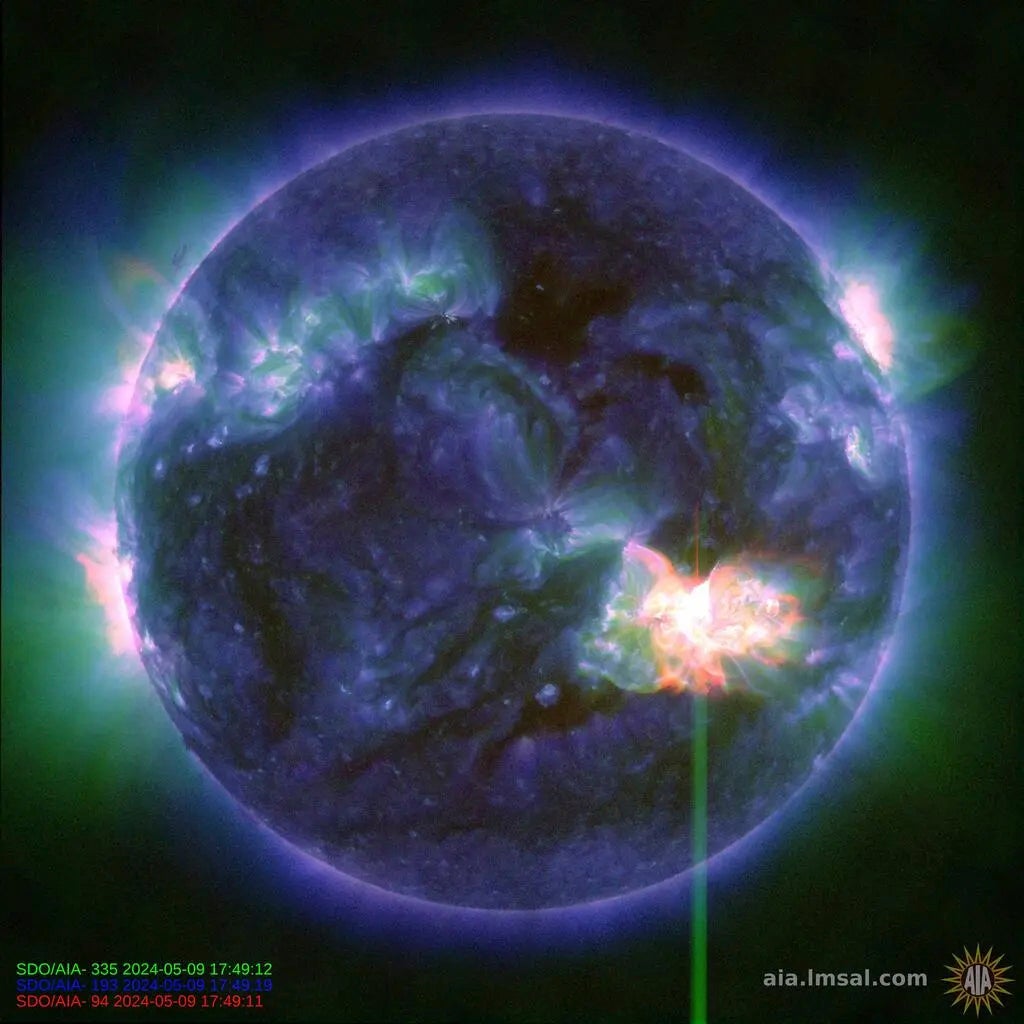Strong solar storm could disrupt communications and produce northern lights in US
A strong solar storm headed toward Earth could produce northern lights in the U.S. and potentially disrupt communications this weekend

A strong solar storm headed toward Earth could produce northern lights in the U.S. and potentially disrupt communications this weekend.
The National Oceanic and Atmospheric Administration issued a rare geometric storm watch — the first in nearly 20 years. The watch starts Friday and lasts all weekend.
NOAA said the sun produced strong solar flares beginning Wednesday, resulting in five outbursts of plasma capable of disrupting satellites in orbit and power grids here on Earth. Each eruption — known as a coronal mass ejection — can contain billions of tons of solar plasma.
NOAA is calling this an unusual event, pointing out that the flares seem to be associated with a sunspot that’s 16 times the diameter of Earth. An extreme geomagnetic storm in 2003 took out power in Sweden and damaged power transformers in South Africa.
The latest storm could produce northern lights as far south in the U.S. as Alabama and Northern California, according to NOAA.
___
The Associated Press Health and Science Department receives support from the Howard Hughes Medical Institute’s Science and Educational Media Group. The AP is solely responsible for all content.